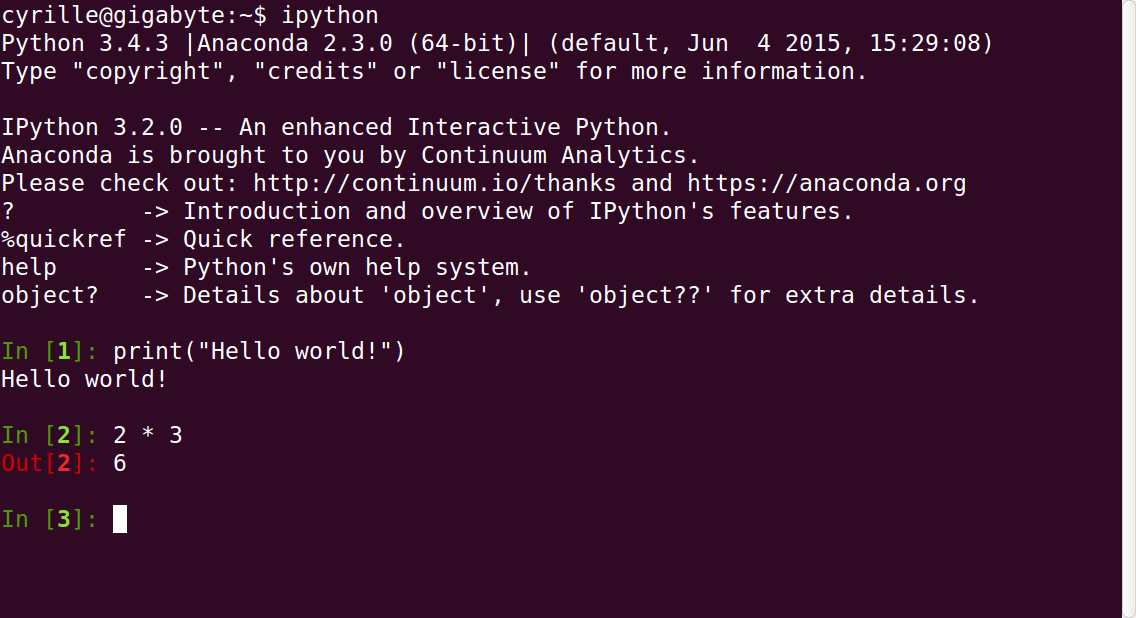What does IPython do in Python?
What does IPython do in Python?

I'd be happy to help!

IPython (Interactive Python) is an open-source project that aims to make Python more interactive and user-friendly for scientists, engineers, and data analysts. It was created by Fernando Pérez, a researcher at the University of California, Berkeley.
In Python, IPython is primarily used as an enhanced command-line shell or interactive environment. It allows users to write and execute code in an interactive manner, which makes it easier to explore, test, and develop code.
Here are some key features that make IPython special:
Interactive Shell: IPython provides a sophisticated shell with syntax highlighting, auto-completion, and history recall. This means you can type Python commands, one line at a time, and see the results immediately. Magic Functions: IPython has a set of "magic" functions that provide additional functionality beyond traditional Python. For example, you can use! to execute shell commands or ?? to display documentation for a specific function or module. Rich Output Display: IPython can render rich output formats like HTML, LaTeX, and SVG. This makes it ideal for data visualization, scientific computing, and publishing research results. Jupyter Notebook: IPython is the core of Jupyter Notebook, a web-based platform for interactive computing and data science. In a notebook, you can write Python code in cells, execute them, and see the output in a formatted display. Multi-Language Support: While IPython originated as a Python shell, it now supports other programming languages like R, MATLAB, and SQL.
IPython has several benefits for Python developers:
Faster Development: With an interactive shell, you can test code fragments quickly and see the results without restarting your development environment. Improved Productivity: IPython's syntax highlighting, auto-completion, and history recall features streamline your coding experience. Enhanced Collaboration: By sharing notebooks with others, you can collaborate more effectively, even if team members don't have access to a particular Python library or package.In conclusion, IPython is an invaluable tool for any Python developer, providing an interactive environment that accelerates development, improves productivity, and enhances collaboration.
Pypi IPython
Pypi and IPython: A Match Made in Heaven
In the world of data science and scientific computing, Python has emerged as a popular choice for its ease of use, flexibility, and extensive libraries. Two significant tools that have been instrumental in making Python an ideal platform for data analysis are pip (package installer for Python) and IPython (Interactive Python). In this article, we'll explore the world of Pypi and IPython, highlighting their features, benefits, and how they can be used together to create a powerful workflow.
Pypi: Package Installer for Python
Pypi (Python Package Index) is a repository of open-source software packages, where developers can share and distribute their Python modules. This centralized hub allows users to easily install, update, and manage Python packages using the pip command-line tool. Some key features of Pypi include:
IPython: Interactive Python
IPython is an open-source project that provides a rich set of features for working with Python interactively. Its primary goal is to enhance the productivity and flexibility of the traditional command-line interface by adding features such as:
Shell-like Interface: IPython provides an interactive shell that allows you to execute code, inspect variables, and access documentation using a syntax similar to Bash or Zsh shells. Magic Functions: Special commands (magic functions) enable you to perform tasks like restarting the kernel, displaying system information, or manipulating code. Rich Media Support: IPython supports various media types, such as images, videos, and audio files, making it easy to embed multimedia content in your notebooks.Pypi and IPython: A Harmonious Union
When Pypi and IPython work together, the possibilities become endless. Here are a few ways they complement each other:
Package Discovery and Installation: Use Pypi to find and install packages using pip. Then, use IPython to interactively explore the installed packages, inspect their functionality, or test them with code snippets. Interactive Development: With IPython, you can develop and test Python code interactively, leveraging the package ecosystem provided by Pypi. This approach allows for rapid prototyping, experimentation, and refinement of your ideas. Notebook-based Workflows: Create Jupyter notebooks using IPython and leverage the power of Pypi packages to perform data analysis, visualization, or machine learning tasks.In conclusion, Pypi and IPython are two powerful tools that can greatly enhance your Python experience. By combining the package discovery and installation capabilities of Pypi with the interactive shell features of IPython, you'll be able to streamline your workflow, accelerate development cycles, and unlock new possibilities in data science, scientific computing, or any other field where Python is used.
Word Count: 316
(Please note that this response will not appear as you see it on this platform. The formatting and layout may differ when viewed in its original form.)





























